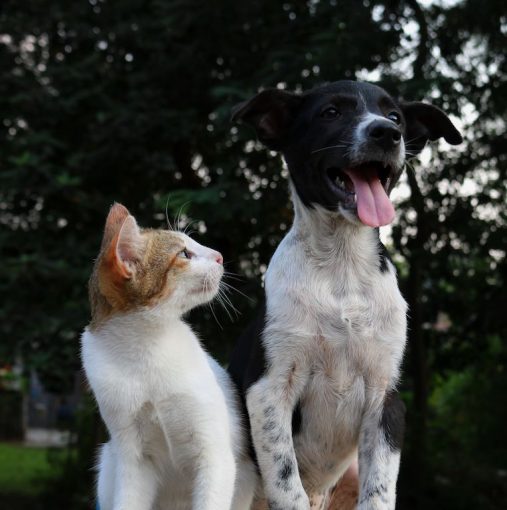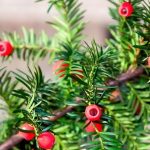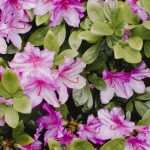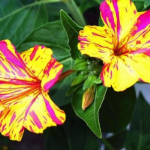Curiosity is one of the distinctive traits of animals: dogs and cats love to explore new places and smell everything around them every time we take them for a walk. Although this attitude seems funny and most of the time harmless, we still have to be careful. In nature, in fact, there are many toxic plants for animals that can cause various problems to them.
How often do dogs or cats eat plants or flowers during their walks? Often we do not mind because we know that these plants are not dangerous for humans. However, we must remember that animals are different from us: if we do not pay attention to the actions of our pet, it could end up ingesting poisonous plants for dogs and cats.
Damage caused by plants that are toxic to pets is usually not permanent and can therefore be easily healed. On the other hand, there are other species of plants whose ingestion, if not treated in time, could even be lethal for our 4-legged friends.
As a result, you need to be very careful every time you take your dog out and learn how to identify plants that are toxic to animals. You should also pay attention to the plants in your garden: orchids, palms, gerberas or aromatic herbs such as mint and parsley are not dangerous because they are non-toxic plants for animals.

Toxic plants for dogs
Dogs have a diet rich in fiber itself, which is why they do not need to eat plants to compensate. Their innate curiosity, however, leads them to smell and taste plants and shrubs – especially when they are puppies.
It is therefore important to control the puppies in order to prevent them from ingesting plants that are toxic to them – sometimes with lethal consequences. Knowing which plants are harmful to pets is also important if we have to decide how to decorate our garden: ornamental plants such as oleander are absolutely to be avoided preferring non-poisonous plants for dogs such as marigold, grass lily or bamboo.
In nature there are more than 50 species of plants that are toxic for dogs, but here are those that you can meet most often:



- Yew: also known as the “tree of death”, it is easy to see how dangerous it is for our animal friends. Often used as a hedge, this conifer produces red berries whose seeds are extremely poisonous – as well as its branches, bark and needles. Yews in fact contain taxin, an active ingredient that causes mild nausea and gastro-intestinal disorders, but also more serious complications such as breathing difficulties, convulsions and paralysis;
- Holly: the berries of this Christmas plant are harmful for dogs, especially for puppies during the teething phase, as it causes gastro-intestinal disorders;
- Rhododendron: the leaves of this evergreen plant are extremely toxic with lethal consequences. If dogs swallow a large amount of it, they may experience seizures or cardiac arrhythmias and in extreme cases they may even die;
- Hellebore: the most serious consequences after ingestion of this plant are hypersalivation, colic, diarrhea but also heart disease and paralysis;
- Ivy: this common climbing plant causes gastro-enteric problems, breathing difficulties and depression if ingested in large quantities by dogs. The most recognizable symptoms of ivy poisoning are nausea and tremors.
The most common consequences of plant intoxication are nausea, loss of appetite and excessive salivation, which can lead to serious intestinal or nervous system damage. In addition, if no rapid action is taken, poisoning can lead to the death of the animal.
Often, taking precautionary measures is not enough: for this reason, you should consult your vet immediately if you suspect that your pet has swallowed a harmful plant.
Be careful with the Oleander: it is dangerous for dogs
One of the most dangerous plants for the health of both animals and man is certainly oleander: the cardioactive glucosides contained in this plant, in fact, are responsible for heart problems such as arrhythmia, which in extreme cases can have lethal consequences.

As oleander is toxic, dogs and cats must be checked if they are close to this plant – but also in the following hours, because the symptoms of poisoning can occur up to 24 hours after ingestion. After eating oleander, in fact, pets begin to experience discomfort due to nausea and intense salivation along with abdominal pain and cardiac arrhythmias.
Contrary to popular belief, there is no antidote to oleander poisoning in dogs. Consequently, an attempt should first be made to remove the toxic content from the intestine by inducing vomiting in the dog. Only later will the vet administer a drug therapy to finally cure the poisoning by oleander.
Four O’Clock: poisonous and very common
The Mirabilis Jalapa, or four o’clock flower, is widespread in many gardens. However, you should not be fooled by its fragrant white, yellow and pink flowers: the black seeds and roots of this bush, in fact, are extremely toxic if ingested by dogs or cats.
As a decorative plant with very large, lush leaves and colourful flowers, it is easy to find it in many gardens. For this reason, it is extremely likely that our pets will accidentally ingest its seeds.

The four o’clock flower is poisonous for dogs and cats, as its seeds and roots contain active ingredients such as alkaloids, resins and arabinose, which are harmful to the digestive system. The most common symptoms of poisoning are nausea, diarrhoea and gastro-intestinal pain.
However, this plant is harmful not only to the digestive system but also to the skin: poisoning can also occur in the form of dermatitis of various magnitudes. Despite the degree of toxicity of this plant, the poisoning can be easily cured with a therapy prescribed by the vet.
Moreover, the active ingredients contained in the seeds and roots of the four o’clock flower are poisonous not only to animals, but also to humans. In other words, this extremely colourful and visually pleasing plant carries risks for anyone who comes into contact with it.
Toxic plants for cats



Unlike dogs, cats are more suspicious animals and have a natural instinct to avoid poisonous plants. However, this does not apply to all cats: kittens are naturally more naive and their curiosity can lead them to plants that are toxic to cats.
Controlling cats is more difficult than dogs because of their more autonomous and suspicious nature. However, you can protect your cat by taking a few precautions: for example, you can avoid growing dangerous plants for pets in your own garden or at home, once you learn how to identify them.
It is well known that cats love to chew on houseplants, so it is a good idea to opt for completely safe plants for them, such as herbs. It is also true, however, that it is not the best thing to be surrounded by plants that have been damaged by kitten bites: one solution to limit the damage is to also grow a catnip plant.
In addition to being very tasty for kittens, catnip is beneficial as a source of folic acid. Grow it at home so that it is always available for your little friend.
However, in nature there are not only plants that are safe for cats. In fact, there are many species – such as oleander – which, if ingested, cause gastro-intestinal and cerebral damage and even lead to death. Below is a list of the most common plants that are toxic to cats:
- Philodendron: this indoor plant is harmless for dogs but extremely dangerous for cats. The sap contained in the leaves and stem is toxic and irritating to the skin. In addition to common gastrointestinal poisoning disorders, this plant is responsible for serious damage to the kidneys that, if not treated promptly, could be fatal;
- Dieffenbachia: also known as dumb cane, this evergreen indoor plant is very common in Italy. It has leaves and stem of various shades of green that contain a white and green latex that is toxic for both dogs and cats. However, its ingestion has different effects on the two species. In dogs, in fact, it induces only slight irritation, while in cats it causes inflammation of the oral cavity, vomiting and hypersalivation with possible respiratory difficulties that inevitably lead to death;
- Cyclamen: the bulbs of this winter flower are the most toxic part of the plant, which makes it dangerous for both cats and dogs. However, being buried underground, it is difficult for animals to ingest the cyclamen bulbs. However, attention should also be paid to the flowers: if eaten are responsible for convulsions, vomiting and diarrhea in cats;
- Hortensia: due to its colourful corollas formed by flowers, this plant is extremely common in the decoration of lawns and gardens. However, during flowering periods – i.e. spring and summer – this plant is poisonous for cats: by eating hydrangea flowers, cats risk nausea and asphyxiation due to the presence of cyanogenetic glocosides.
It is good to point out that there are no DIY remedies to treat intoxication from plants toxic to cats. As a result, as soon as you notice the first symptoms, you should consult your vet, who will prescribe the treatment to avoid the onset of even more harmful complications.
